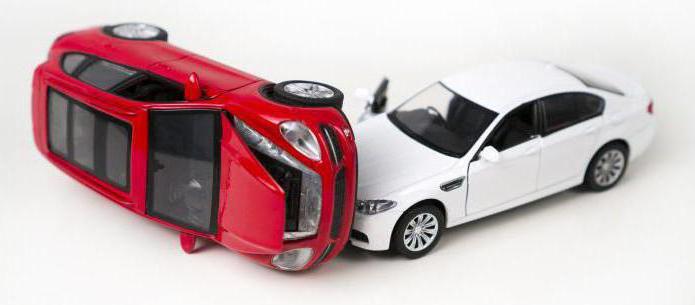Currently, various situations happen on the roads of our country every day. How to behave in a traffic accident? In the event of an accident, insurance benefits may be received within the specified period, which is determined by the contract. However, many motorists, due to various circumstances, do not have time to promptly demand compensation from the Insurance Company for damages, as a result of which the limitation period for compulsory motor liability insurance expires. What it is? How does it work? You will find the necessary information in the article.
general information
How is the statute of limitations for OSAGO? This is the time allotted to the owner of the vehicle in order to go to court to solve any problems. If a citizen for some reason does not have time to file a lawsuit, then consideration of his case may be refused.
In most cases, the cause of the trial is:
- Protection of one’s own interests. For example, the UK refuses to fulfill its obligations, or the culprit of a car accident does not want to pay for the damage.
- A lawsuit has been filed against you. Most often, such cases are related to the statute of limitations for OSAGO recourse claims, when the insurer wants to recover compensation from the driver for the damage incurred.
To receive the insurance payment under the compulsory motor insurance policy, you need to know the period that is allocated for insurance payments. As for the second case, if you have been sued, but the statute of limitations (abbreviated as SID) has already expired, then you can recognize the charges against you as unlawful. In this case, there is a possibility of full or partial cancellation of damages.
The statute of limitations for OSAGO has expired: what to do?
If you did not have time to submit an application to the UK for compensation for damage suffered during an accident, this does not mean that it will be impossible to receive compensation. According to Russian law, the court is obliged to consider every lawsuit filed by citizens. In this case, the statute of limitations will be taken into account by the court only if one of the parties mentions it.  In any case, if you receive a notice of litigation involving you, you should not ignore it. The thing is that one side wins the lawsuit if the other did not appear at the court hearing. At the hearing of the case, it is necessary to mention the expiration of the limitation period for compulsory motor liability insurance after an accident. In this case, it is highly likely that the plaintiff will be denied.
In any case, if you receive a notice of litigation involving you, you should not ignore it. The thing is that one side wins the lawsuit if the other did not appear at the court hearing. At the hearing of the case, it is necessary to mention the expiration of the limitation period for compulsory motor liability insurance after an accident. In this case, it is highly likely that the plaintiff will be denied.
LED recovery
If more than three years have passed after the accident, any individual, with the exception of individual entrepreneurs, can reinstate him through the court. However, this is only possible if the victim could not file an application due to major health problems or for any other reasons.
As for legal entities and individual entrepreneurs whose vehicle is listed in the company’s ownership, in this case it will not be possible to restore the statute of limitations for compulsory motor third-party liability insurance. The thing is that in September 2015, some adjustments were made to the current legislation. Compensation for damage in the event of an accident to individual entrepreneurs and legal entities who do not have time to submit an application on time is not made.
The statute of limitations for OSAGO: what is it equal to?
According to Russian law, irrespective of the insurance field, the LED time interval is three years. Car citizen is no exception.But here it is important to understand one important nuance. The thing is that if your health has been harmed, then you can file a lawsuit at any time, since the LED in this case plays absolutely no role. However, this does not apply to insurance contracts for which the claim period is three years.
Legislation allows for the extension of LEDs if the insurance company or the culprit of the car accident recognizes its debt, or a trial is initiated. In this case, the countdown of the time period stops, and then starts from the beginning. If the court rejects the appeal, then the countdown does not occur.
Reference point
The countdown of the statute of limitations for compulsory motor third-party liability insurance (to which it is equal, we have already figured it out) begins from the moment of establishing the person from whom payment of compensation for the damage may be claimed. In legislative practice, this rule is common to all cases related to monetary compensation. Thus, it is impossible to give an unambiguous answer to the question of when to start the countdown. It all depends on the particular case, which is not averse to unscrupulous insurers and perpetrators of accidents who want to avoid damages. As practice shows, very often the start date of the period for filing claims is determined not by the insurance contract, but by the judge during the trial.
Claims to the insurance company
An insurance company can be sued if it refuses to fulfill its obligations no later than 36 months from the date of the accident. This applies to absolutely all cases related to litigation. In some cases, the time frame may be shifted due to holes in legislation and contradictions between individual laws.
As for the time when the statute of limitations for compulsory motor third-party liability insurance will begin to be calculated, the starting point is the moment of the accident. However, if the insurer wants to evade compensation for damage, then when applying to the court, you should be guided by Article 200 of the Civil Code of the Russian Federation, which states that the LED begins to operate from the moment you find out about the violation by the insurance company or another person of your own rights or convicted of the fact of non-payment of compensation for damage .
Claims for the culprit of an accident
As for the cases of payment of compensation in case of an accident, the culprit of which was another person, the LED does not change, and you have 3 years to claim damages. The reference point will be the moment the perpetrator of the car accident and the amount of the cash payment are identified. For example, a very common situation among drivers on the road is when the driver who triggered the accident does not have insurance. In this case, you can go to court to file a claim for 3 years from the date the incident was recorded.
Other common problems are those related to the statute of limitations beyond the CTP limit. The insurance company may refuse to fully compensate for the damage if, as a result of the collision, the vehicle received too much damage, and its restoration will cost much more than stipulated in the contract. In this case, the payment of a part of the amount that exceeds the limit established by the insurer lies with the culprit of the accident. It follows that the countdown of the LED will begin from the moment you find out that the insurance will not completely cover the repair of the machine.
LEDs for subrogation and regression
Subrogation and regression differ among themselves in the procedure for establishing the time interval that is assigned to the victim for filing a lawsuit. In the case of subrogation, the right to claim compensation passes from the culprit of the accident to the policyholder. In this case, the current legislation states that the limitation period for OSAGO recourse and the date of its calculation are calculated in the prescribed manner.Regress suggests the beginning of the period for filing a claim from the moment the victim receives monetary compensation from the insurer.
How does everything happen in reality? Unfortunately, the current legislation is far from perfect, and there are many holes in it, resulting in a lot of contradictions and conflict situations in judicial practice.
The beginning of the reference point of the limitation period for compulsory motor liability insurance
In judicial practice, the most controversy arises in claims related to the payment of monetary compensation for compulsory insurance policies. Here, the victims of the Supreme Court come to the decision of the Supreme Court, adopted on January 29, 2015, which states that the SID counting starts on the day when the injured party was notified that the IC did not intend to pay compensation, or that the damage was not fully repaired volume.
It is worth noting that in practice things are not so smooth, and the court often takes completely opposite decisions. Most often, this happens when considering claims filed by legal entities. In such cases, the court assigns a countdown to the time period since the occurrence of the insured event, and its duration is standard three years.
Subrogation
The limitation period for subrogation under compulsory motor third-party liability insurance is determined by the same decision of the Supreme Court, according to which the victim is obliged to file a lawsuit in court within the first three years. The subrogation LED's reference point is the day on which the accident occurred. If the claim is not filed within the specified period, it will not be considered by the court.
Regression
This is one of the most difficult situations that drivers face when calculating the limitation period for accidents. CTP regression in this case makes litigation more complicated. The essence of the problem is to establish the reference point of the LED. Most often this is due to those cases when the insurance company has already made several payments on an insured event over a long period of time.
The most correct statement during the regression will be as follows: "The LED begins to be counted from the moment the first payment is made to compensate for the damage caused to the victim." This is quite logical if we consider one example. Let's imagine that the amount of damage incurred is 25 thousand rubles, and the size of the monthly payment is 250 rubles. If the reference point moves with each payment, the LED will reach eight years. This sounds illogical, because in this case, an unscrupulous insurer gets significant advantages over insurance companies that work honestly and make insurance payments right away, without breaking the entire amount over a long period of time.
As a second option, you can consider the case in which the time period for filing lawsuits will be counted from the moment of the last payment, but this is also illegal.
Judgment
As practice shows, when considering claims related to regression LEDs, courts often take the side of insurers. Basically, such situations arise when the injured person files a claim after three years from the start of the countdown of the LED.
A striking example of the fact that insurance companies have certain advantages when considering lawsuits and the chances of winning a case is higher than that of private individuals is the case that occurred in 2011 in the Kostroma region. The defendant was a woman who had an accident. Since the vehicle was the only source of her income, the insurer compensated for the damage caused to her. Compensation was divided into 15 payments, which were carried out over four years. When all the damage was fully compensated, the IC filed a lawsuit against the culprit of the accident with a claim for compensation.  During the trial, it was decided that the defendant is obliged to pay the insurance company the amount of insurance payments that have been made over the past 3 years, which amounted to only 30 percent of the total amount.
During the trial, it was decided that the defendant is obliged to pay the insurance company the amount of insurance payments that have been made over the past 3 years, which amounted to only 30 percent of the total amount.
LED break
In the time interval involving the filing of a lawsuit in court, a break can be made. The legal grounds for this are the recognition by the insurer of the legality of the claims of the victim and the partial payment of the required amount. In this case, the countdown time is completely reset.
Finally
Now you have a full understanding of what an LED is, and you also know how to behave and what measures to take in the event of problems associated with insurance payments for motor citizens. If you cannot figure out the situation on your own, you can always use the services of experienced lawyers who are much more qualified in this matter than most motorists. Most importantly, you should never be afraid to assert your rights, and it is best to try not to get into conflict situations.